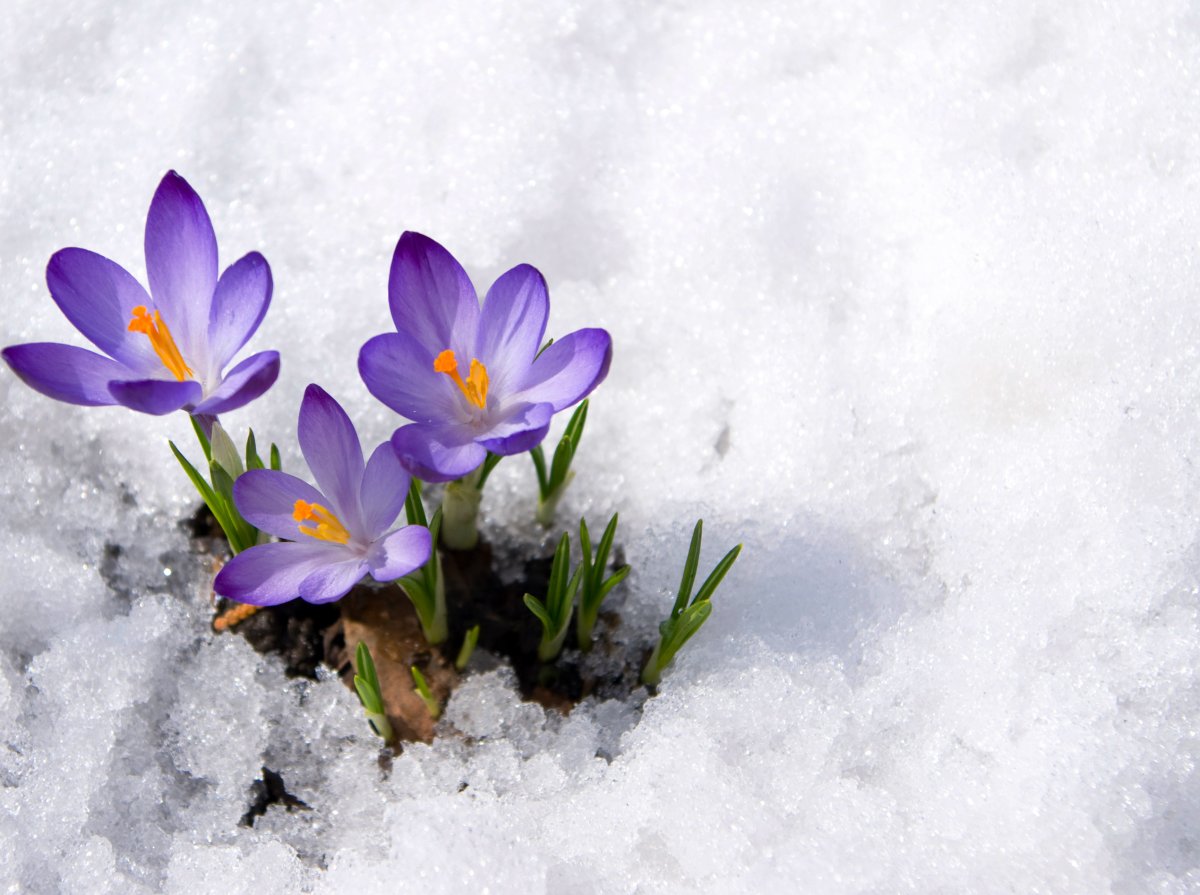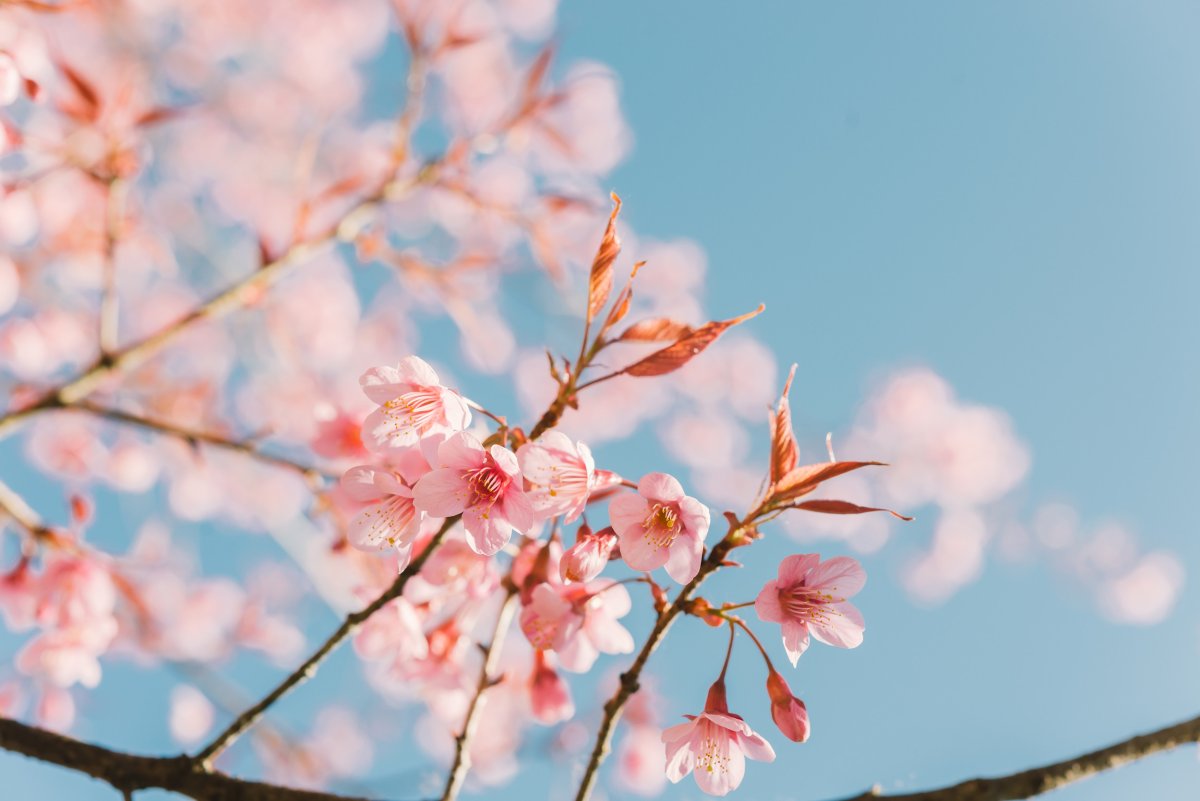Spring has sprung earlier than usual in the U.S. East Coast, with leaves and flowers growing on plants up to 20 days ahead of schedule.
In a Facebook post, the Maryland Department of Natural Resources—Wildlife & Heritage Service shared data from the National Phenology Network. It showed how there was a surge of early leaf growth across the East, Midwest and Southeast. However, from Nevada and further west, spring appears to have been delayed, with leaves growing later than usual for the time of year.
The map of Daily Spring Index Leaf Anomaly shows how much the spring leaf bloom has varied from its average for this time of year. Leaves were arriving between eight and 20 days early throughout Ohio, Indiana, Virginia, West Virginia, Kentucky, Tennessee, Georgia, North and South Carolina, Mississippi, Alabama, Missouri, Arkansas, Delaware and Maryland.
"In any given year, we may see the start of spring arrive earlier or later than what is typical, in response to temperature conditions in that year," Theresa M. Crimmins told Newsweek. She is the director of the U.S. National Phenology Network and a research professor at the University of Arizona.
"We see this variability occurring this year, too: in the East, where it's been much warmer than normal, plants and animals are becoming active much earlier than usual. In the west, including Arizona and southern California, temperatures have been cooler than normal so far this year. We are seeing delayed springtime activity.
"However, the long-term trend, over years and decades, is that, yes, across the country, the start of spring is advancing, and more so in some parts of the country than others," Crimmins added.

Crimmins said that the West seeing spring being delayed this year is also because it has been exceptionally cool in those regions. California is in the grips of a huge snowstorm. The Sierra Nevada mountain range has received 48.33 feet of snow between the start of 2023 and March 6.
"In the wintertime, the weather pattern in the northern hemisphere can start to repeat itself, kind of getting stuck, into what we call 'dominant modes of variability,'" Michael Crimmins, a climate-extension specialist at the University of Arizona, told Newsweek.
"Since mid-January, the weather pattern across the U.S. has been characterized by an upper level trough of low pressure over the western U.S. This has led to the wet conditions, and cooler-than-average temperatures," he added. "There's also an upper level ridge of high pressure across the eastern U.S. This has led to the warmer-than-average conditions."
The spring leaf index anomaly from the National Phenology Network shows early leaf out in the South and Southeast and late leaf out in the Southwest.
— Denise Gutzmer (@DroughtDenise) March 5, 2023
Similarly, the #spring bloom index anomaly also shows early bloom in the South and Southeast and late in the Southwest. pic.twitter.com/ekP8M5i16u
The warmer temperatures triggering early blooming can also cause animals to begin their springtime cycles. They come out of hibernation sooner, or start a specific phase of their life cycle at an earlier time.
"We are seeing plants and animals become active in much of the eastern U.S. this spring after a mild winter and much-warmer-than-normal temperatures so far this year," Theresa Crimmins said.
"Plants and animals are, in large part, triggered to become active (put on leaves and flowers, emerge from their winter rest phase) in response to exposure to warmth. When we have much-warmer temperatures than is typical, as we are experiencing in much of the eastern U.S. so far this year, we see many plants and animals respond earlier than usual."
Unusually early springs like these can be detrimental to the animal and plant species affected by yearly timings, often by risking frost damage. Theresa Crimmins said how, in the case of plants, this can be minor; for example, leaves that get damaged by frost. But it can also be devastating; there can be a complete loss of crops if the sensitive tissues of the plants are damaged enough.

"This is especially true for fruit and nut trees such as cherries, peaches and plums, which flower before leafing out. In recent years, 'false springs,' where very early warmth leads plants to initiate spring-season activity before being hit with hard frosts, have had major impacts on these crops in various parts of the country," Theresa Crimmins said.
"Second, not all plants or animals respond to early-season warmth in the same way," she added. "Many species advance their activity when spring temperatures arrive early, but others require days to be a particular length or exposure to sufficient chill before starting activity.
"In cases where species depend on one another, such as plants and pollinators, their interaction can be disrupted if they do not respond to early-season warmth in the same way. For example, insects can emerge before the plants on which they depend for food have bloomed."
One example of this occurs in the early spider-orchid, a plant that releases a pheromone tricking male bees into thinking it is a receptive female to mate with. This pretense is precisely timed just after male bees emerge from hibernation but before female bees do, allowing the orchid to be pollinated.
One 2014 study in the journal Current Biology found that the amount of time between when the male bees and female bees emerge drops by about 6.6 days for each degree Celsius of warming. This means that the orchid is getting less and less time to use its pollination strategy.
Climate change is affecting the intricate pollination mechanism between early spider orchids and Andrena bees. Paper here: https://t.co/UBTKMkTQua pic.twitter.com/Ec7DxOYLrZ
— Leif Bersweden (@LeifBersweden) March 29, 2018
This year's early spring can't be entirely attributed to climate change. However, Crimmins said that the increasing global temperatures may cause springs to arrive earlier and earlier in the future.
This has been happening regularly over the past few years. A 2016 National Park Service survey of 276 parks found that three-quarters had some degree of early spring onset. Half had an "extreme" early spring, compared to their historical averages.
"The increasingly warmer temperatures we are experiencing globally make it increasingly likely that conditions like what we are seeing this year will occur again. Long-term trends show progressively earlier springs across the U.S. These match trends in increasing winter and spring temperatures," Crimmins said.
"If we continue to experience progressively warmer winters and springs, we can expect similarly to see progressively earlier starts to springtime activity in plants and animals."
Do you have a tip on a science story that Newsweek should be covering? Do you have a question about the onset of spring? Let us know via science@newsweek.com.
Uncommon Knowledge
Newsweek is committed to challenging conventional wisdom and finding connections in the search for common ground.
Newsweek is committed to challenging conventional wisdom and finding connections in the search for common ground.
About the writer
Jess Thomson is a Newsweek Science Reporter based in London UK. Her focus is reporting on science, technology and healthcare. ... Read more
To read how Newsweek uses AI as a newsroom tool, Click here.






